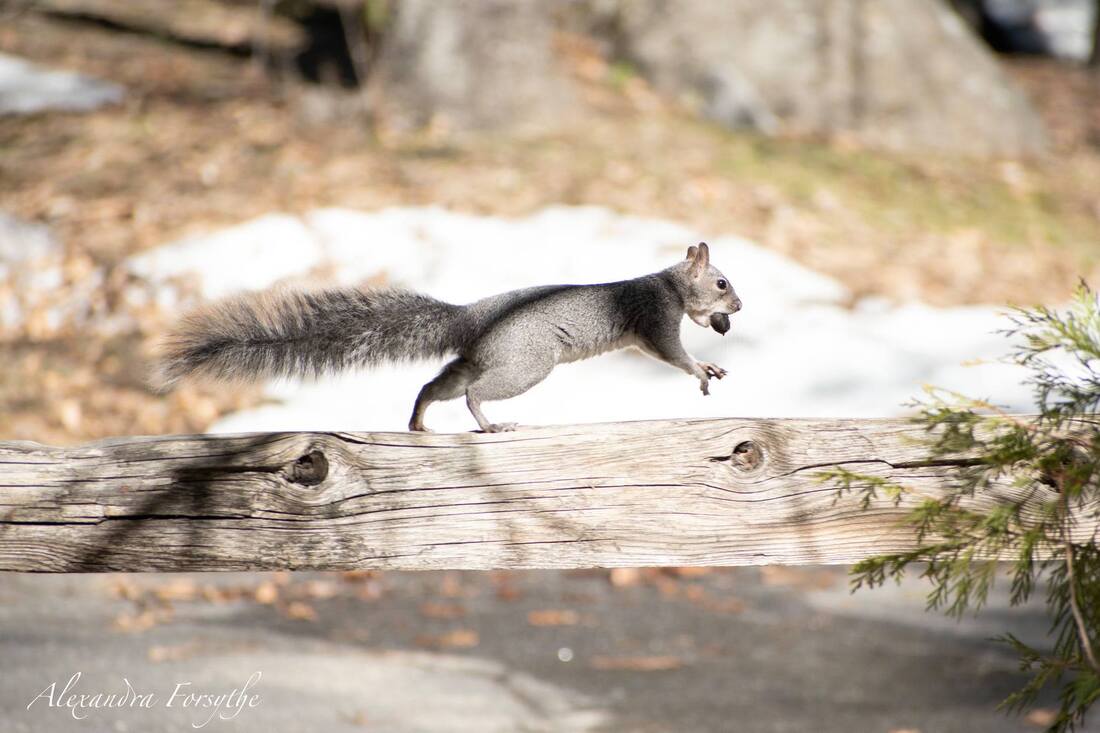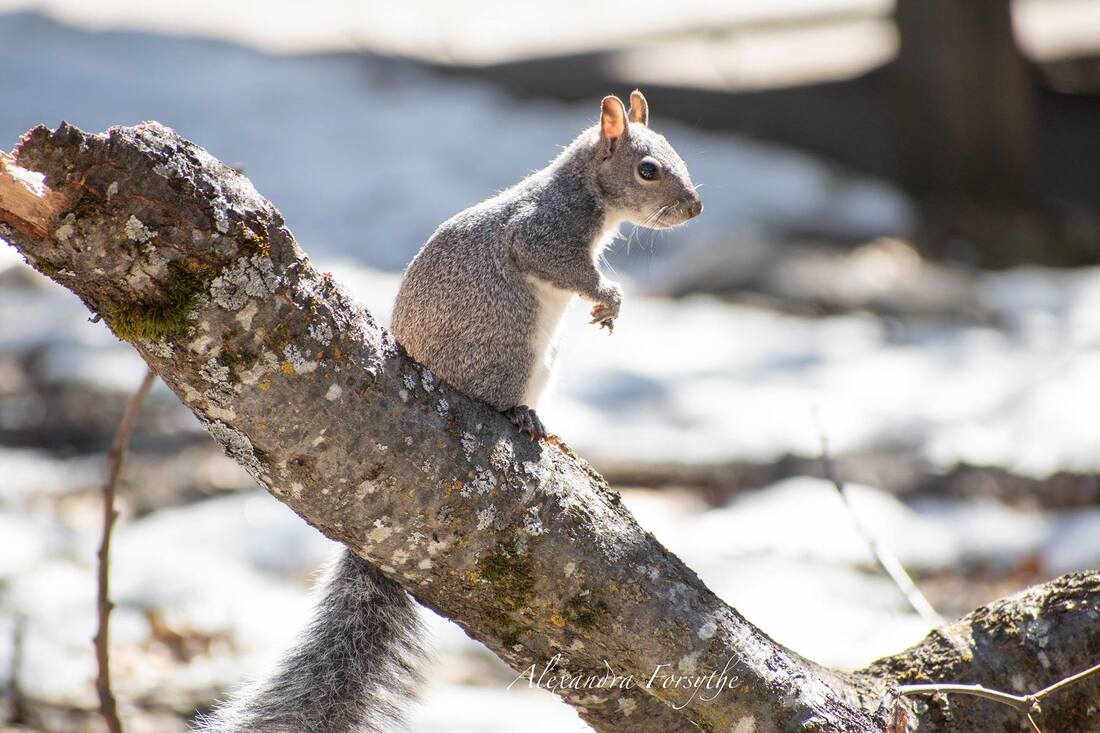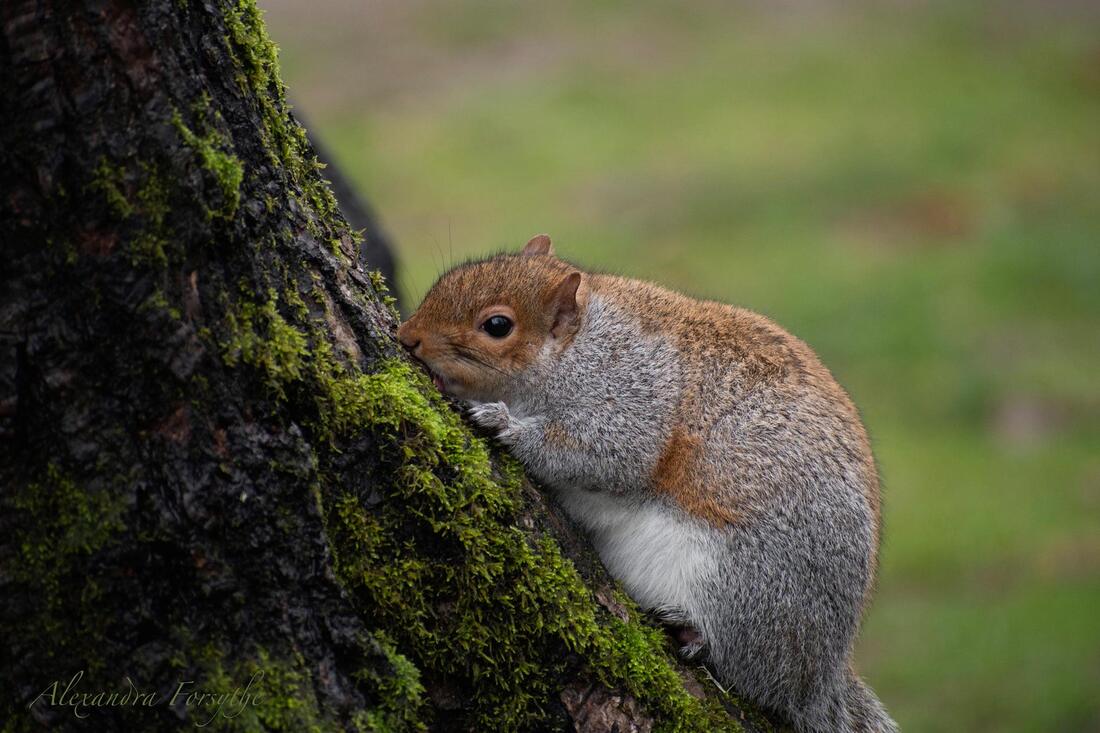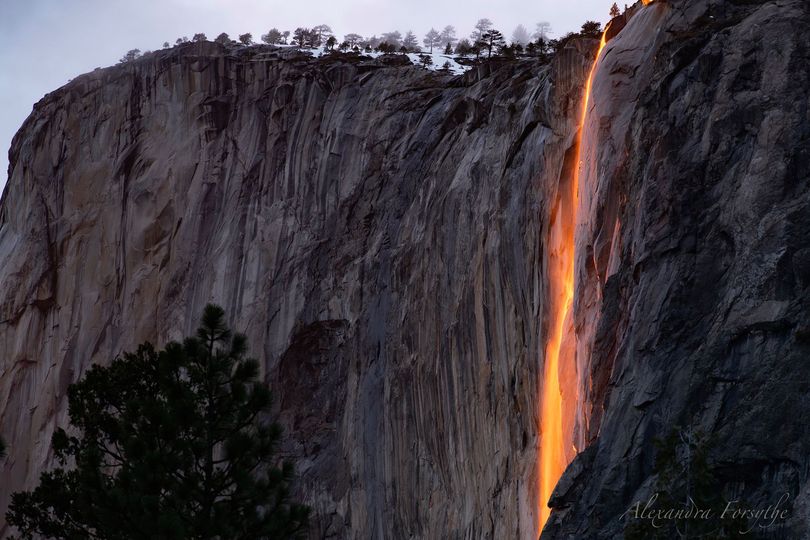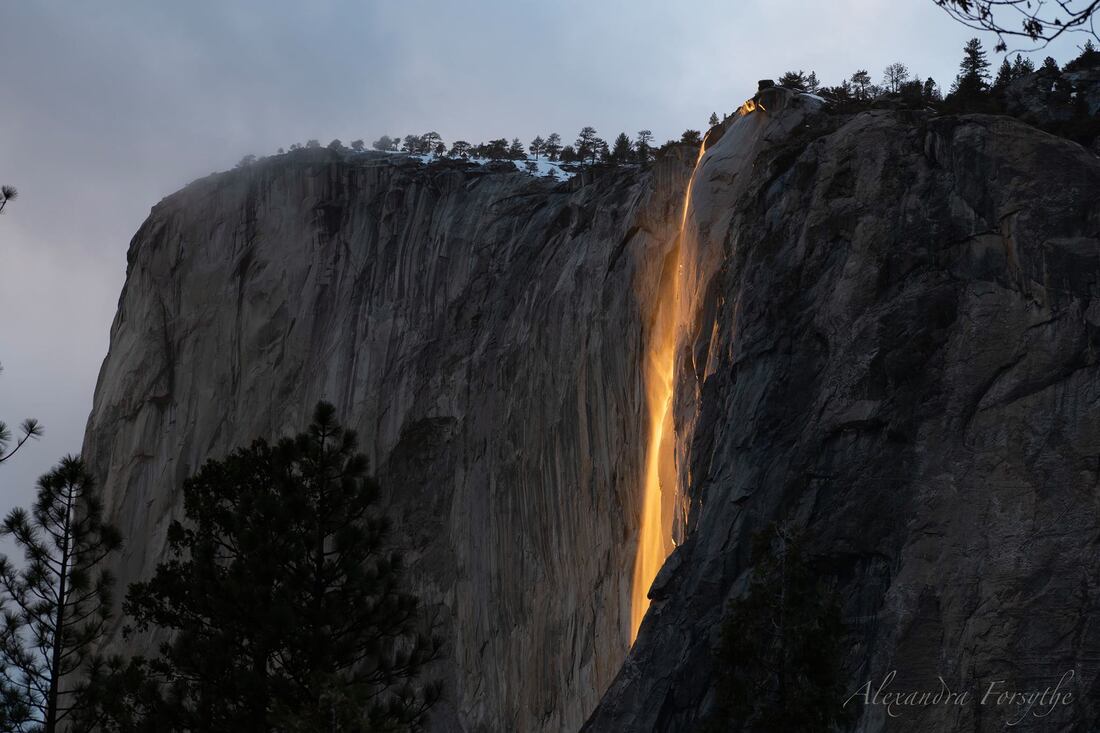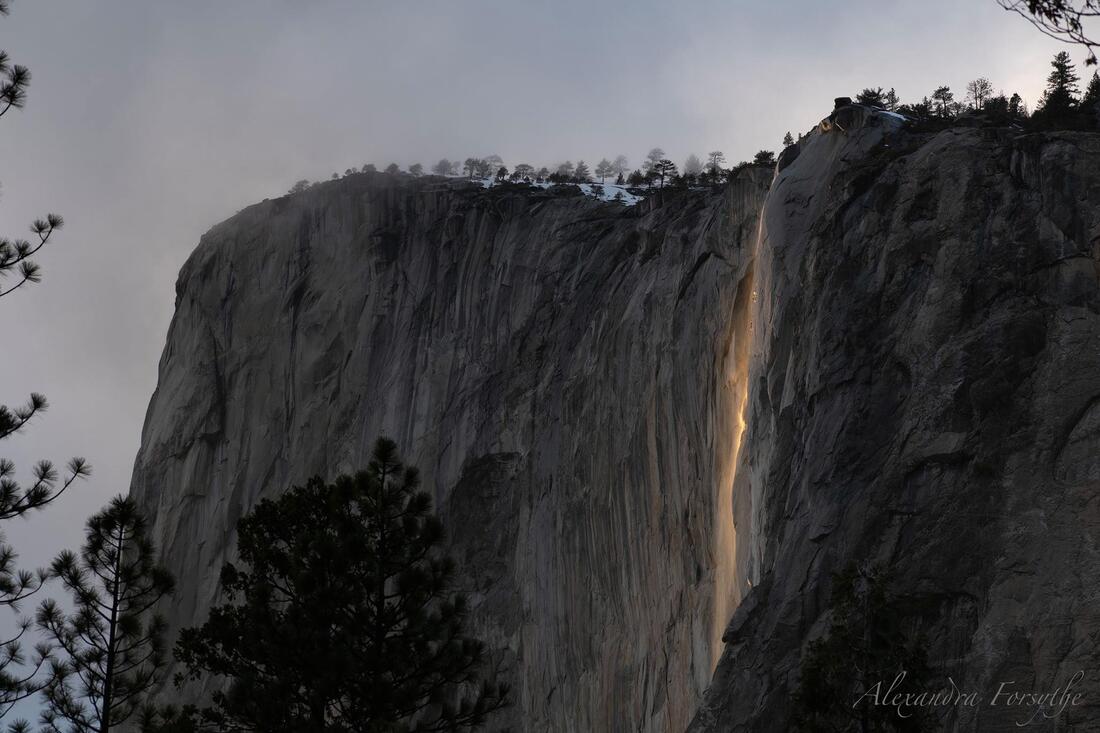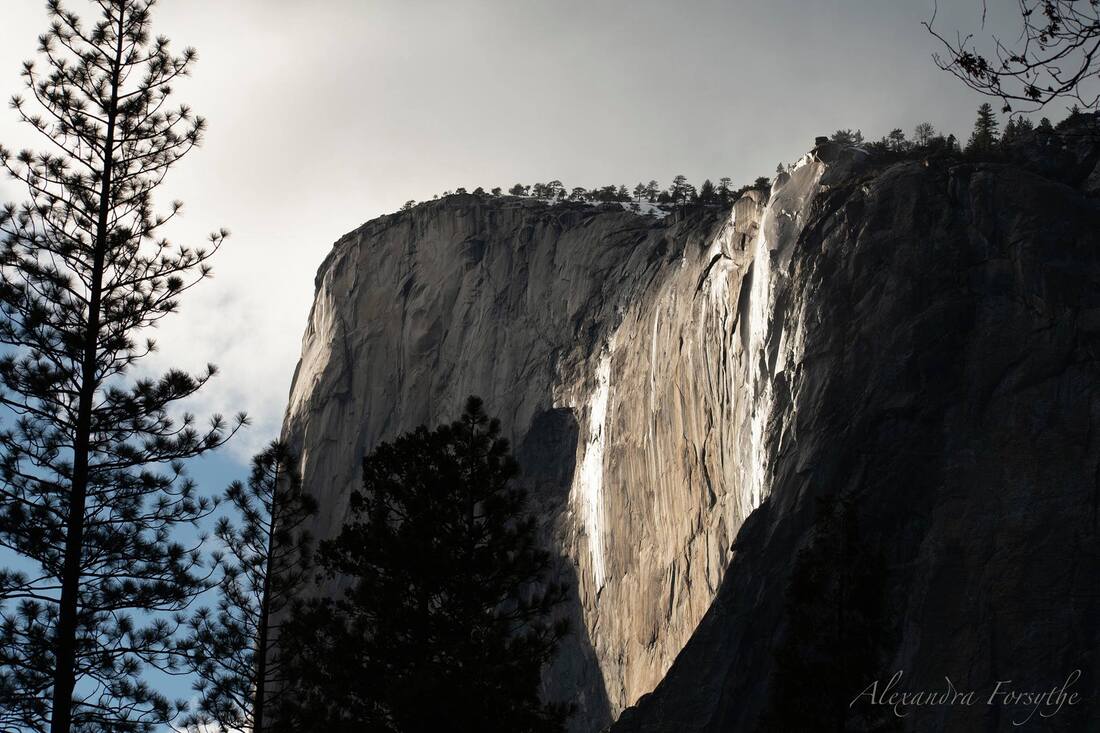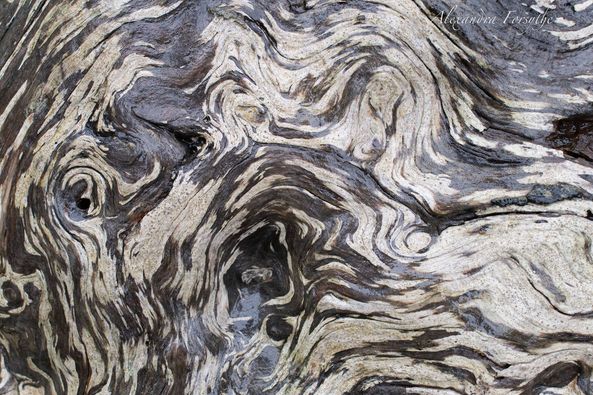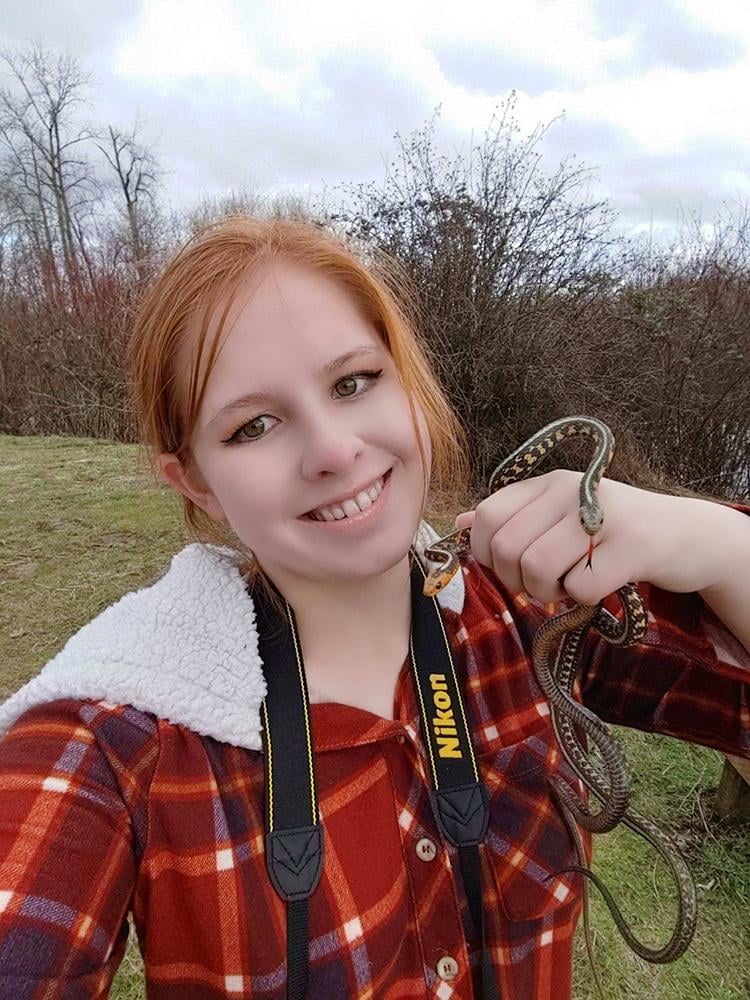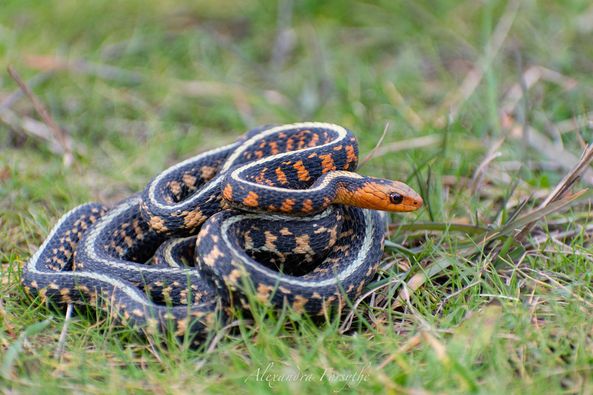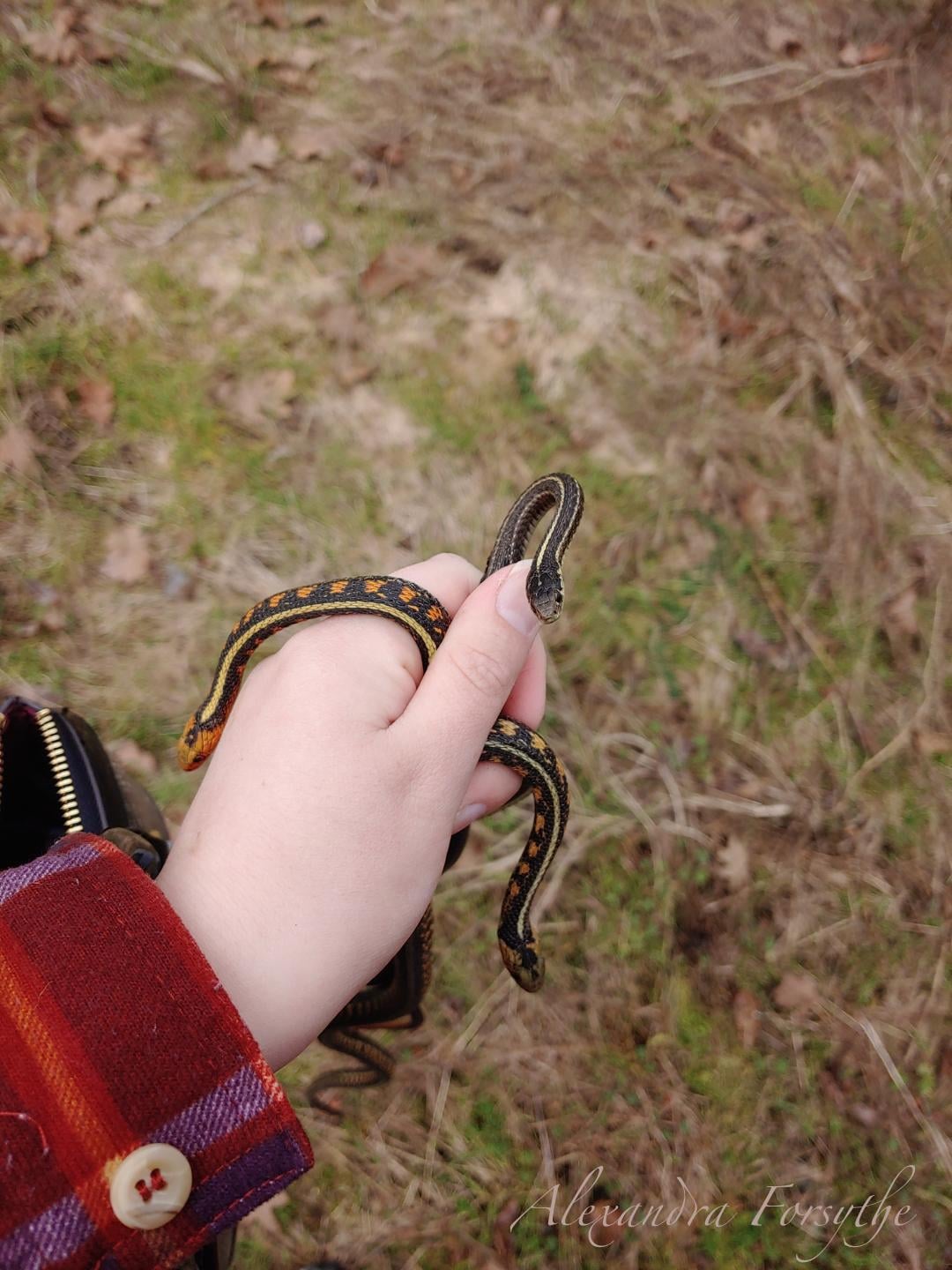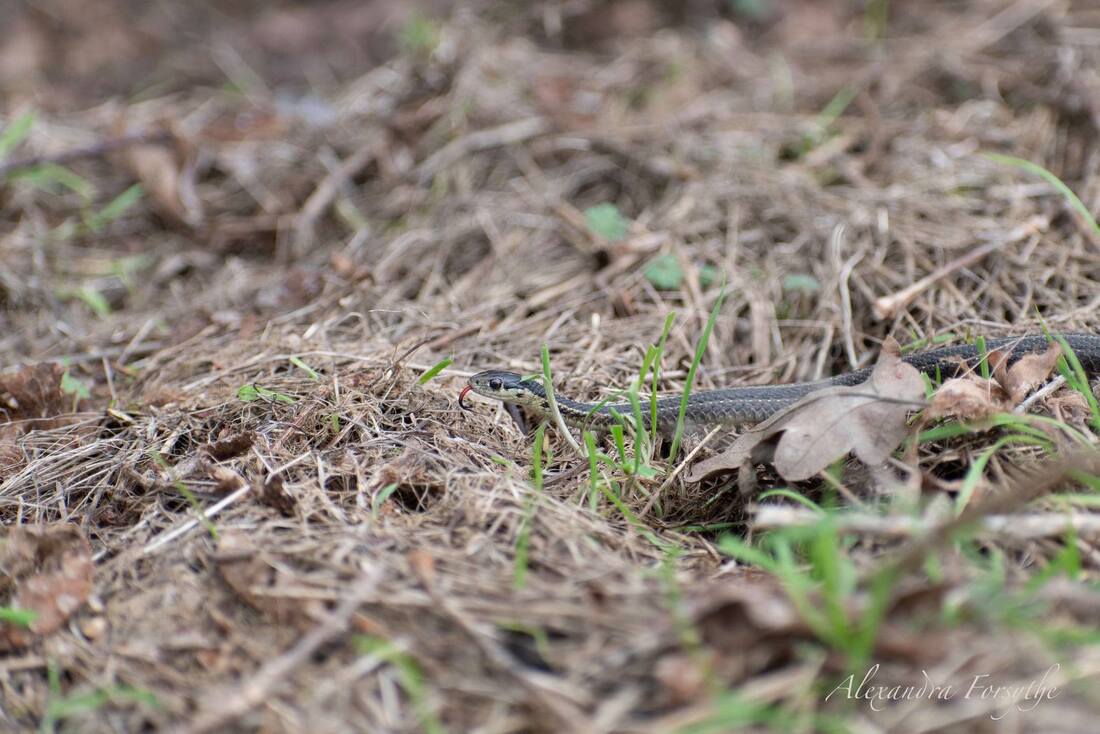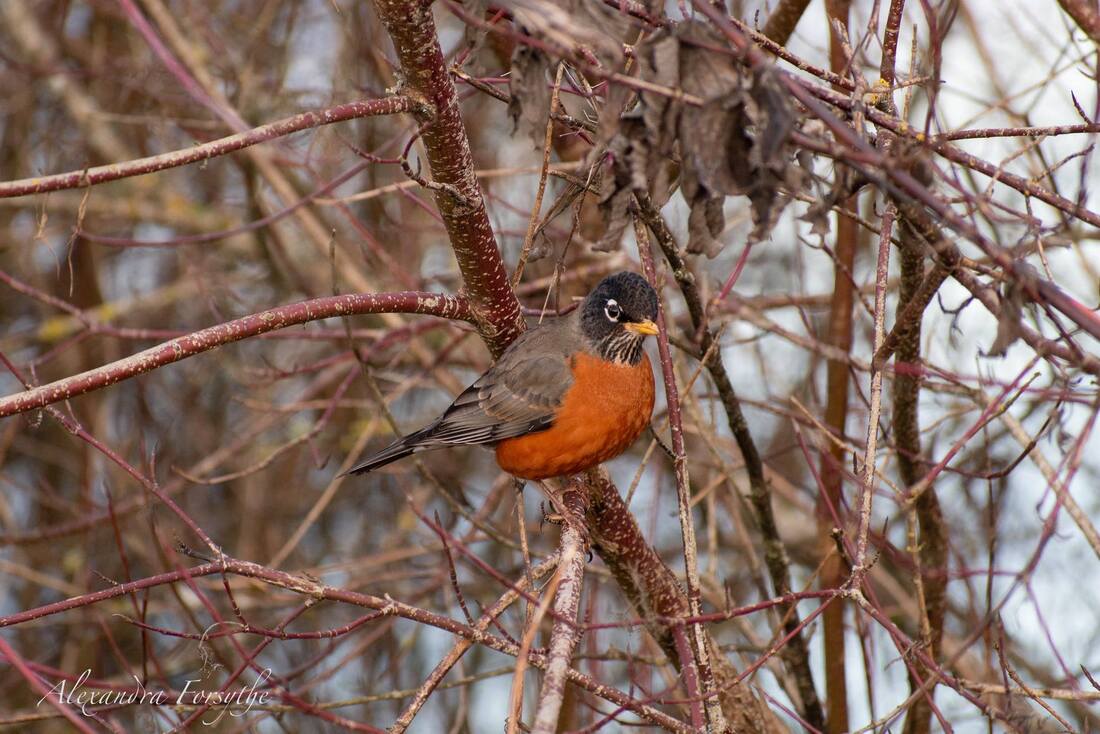A rare sighting of the Western Gray Squirrel! The Western Gray is the largest native tree squirrel in the Pacific Northwest, but this once-widespread species has been declining rapidly in both numbers and in range.
I posted a photo of an Eastern Gray Squirrel below so you can see the differences. The Eastern and Western Gray Squirrels look very similar, but the Eastern has a cinnamon wash to its fur while the Western is a true gray and white.
The Eastern is also smaller than the Western, and it is frequently spotted at backyard bird feeders, in parks with few trees, and even in urban environments. In contrast, the Western Gray tries to avoid urban and suburban landscapes, and it prefers undeveloped, old-growth, native forests without the presence of people, pets, motorized vehicles, and fragmentation (caused by roads, logging, and power lines).
The Eastern Gray was intentionally introduced to the west in the early 1900's and it is often blamed for its part in the decline of the Western Gray Squirrel. However, most of the blame for the Western Gray's decline falls squarely on humans, not only for intentionally transporting the Eastern Gray (and other nonnative species) into other areas and states, but also for continuing to develop the Western Gray's territory for our own use, thereby making it difficult for the species to survive.
To help the Western Gray and all declining species, first learn about the flora, fauna, and habitats in your area and what they need to survive, then act accordingly, and most importantly, take the time to teach other people how to properly respect and care for the natural world.
I posted a photo of an Eastern Gray Squirrel below so you can see the differences. The Eastern and Western Gray Squirrels look very similar, but the Eastern has a cinnamon wash to its fur while the Western is a true gray and white.
The Eastern is also smaller than the Western, and it is frequently spotted at backyard bird feeders, in parks with few trees, and even in urban environments. In contrast, the Western Gray tries to avoid urban and suburban landscapes, and it prefers undeveloped, old-growth, native forests without the presence of people, pets, motorized vehicles, and fragmentation (caused by roads, logging, and power lines).
The Eastern Gray was intentionally introduced to the west in the early 1900's and it is often blamed for its part in the decline of the Western Gray Squirrel. However, most of the blame for the Western Gray's decline falls squarely on humans, not only for intentionally transporting the Eastern Gray (and other nonnative species) into other areas and states, but also for continuing to develop the Western Gray's territory for our own use, thereby making it difficult for the species to survive.
To help the Western Gray and all declining species, first learn about the flora, fauna, and habitats in your area and what they need to survive, then act accordingly, and most importantly, take the time to teach other people how to properly respect and care for the natural world.
